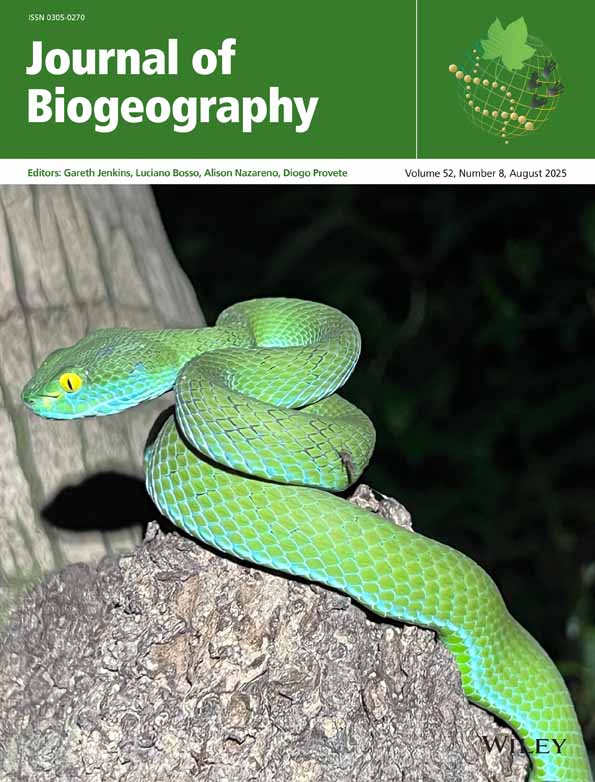Rangeland vegetation dynamics and moisture availability in Tunisia: an investigation using satellite and meteorological data
Abstract
Improved knowledge of the interactions between regional climatic patterns and vegetation dynamics are necessary for predicting the future impacts of climate change on vegetation and biogeochemical processes. This paper describes how Normalized Difference Vegetation Index (NDVI) images generated from Advanced Very High Resolution Radiometer (AVHRR) satellite data were used to investigate the dynamics of rangeland vegetation in Tunisia. The NDVI images provided information about intra- and inter-annual variations in vegetation over nine growing seasons (1983–1992). Comparison of the NDVI data with field-collected ecological parameters for nine individual field sites indicated a strong relationship between the NDVI and percentage vegetation cover. The relationship between biomass measurements and NDVI was, however, less strong. Rainfall and NDVI data for each field site were compared, and significant relationships were found between the two. These indicated that there was a delay in the vegetation response to rainfall. In addition, the NDVI data showed that the vegetation at some of the field sites remained active throughout the summer although there was no rainfall during this period. TuMERT (Tunisian Model to Estimate Rangeland Transpiration), a simple water-balance model, was developed to estimate the amount of rainfall available for use by the vegetation during transpiration. The estimates of actual transpiration derived from TuMERT were found to be more strongly correlated with the AVHRR-NDVI measurements than the rainfall data.




